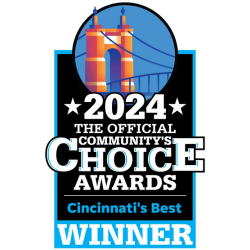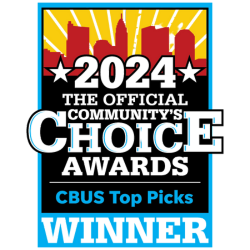Choosing the right size heat pump for your home requires a comprehensive understanding of heat pumps, their workings, and factors like your home’s square footage, your region’s climate, insulation level, and more. At Logan Services, we help homeowners in Dayton, Cincinnati, Columbus, and surrounding areas make informed decisions about their HVAC systems and provide all the services you could need for your HVAC system. Through our family-owned and operated service that has been running since 1969, we have upheld a positive culture focused on superior workmanship and premier customer care. The size of your heat pump matters, and we’re here to help you choose which size you need to keep your home comfortable year-round.
Understanding Heat Pumps
Unlike traditional HVAC systems, heat pumps transfer heat from the outside air or ground into your home during winter and reverse the process in summer, making it an all-year-round solution. It’s an energy-efficient alternative to furnaces and air conditioners, and it works on a simple principle of heat transfer.
In the warmer months, it extracts heat from inside your house and releases it outdoors. During colder months, it captures heat from the outdoor air or ground and moves it inside. This ability to reverse its operation according to the season makes it a standout choice for maintaining a comfortable home environment.
Heat pumps are powered by electricity and can be paired with solar panels to maximize energy efficiency further and reduce utility bills. It’s a green, sustainable option that aligns with Logan Services’ commitment to providing Ohio homeowners with high-quality and eco-friendly HVAC solutions.
Why Heat Pump Size Matters
The phrase “one size fits all” doesn’t apply to heat pumps. A correctly sized heat pump is essential for the system’s efficiency, comfort, and longevity. An oversized heat pump will cycle on and off too frequently, leading to excessive wear and tear.
An undersized unit will struggle to maintain the desired indoor temperature, especially in extreme weather, leading to increased energy consumption and costs. Therefore, understanding what ton heat pump you need is critical to optimizing your home’s HVAC system.
For more information, read our article on why your heat pump is running on auxiliary.
What Ton Heat Pump Do I Need?
The answer to this common question isn’t straightforward. Every home is different, and several factors determine the size of the heat pump you need. For larger homes, you’ll need a bigger heat pump than a smaller one, but there’s more to it than just the size or square footage of your home.
Key Factors to Consider When Choosing Heat Pump Size
Choosing the right size heat pump involves several important factors. As experts in the heat pump marketplace, Logan Services emphasizes three main criteria to ensure your heat pump sizing guide leads you to the best-fit option for your home and lifestyle.
The Square Footage of Your Home
The square footage of your home is the starting point for determining the right size heat pump. Generally, HVAC equipment is calculated based on the amount of area it needs to cover. For example, a one-ton system typically serves up to about 400-600 square feet. This basic range helps narrow down the options, but other factors like ceiling heights and layout differences can impact the actual heating load necessary to keep your home comfortable.
The Climate and Temperature of Your Region
Ohio’s climate can vary, affecting which heat pump size and type are best for your home. Cold climates require HVAC systems that can efficiently operate in lower temperatures to accommodate the necessary heating load. A climate heat pump, designed to work effectively in specific weather conditions, may be necessary to ensure your home remains cozy during the cold weather. Logan Services’ expertise in the local climate aids in selecting a heat pump that is up to the challenge.
The Level of Insulation in Your Home
Proper insulation plays a crucial role in the efficiency of your selected heat pump and all HVAC equipment. Homes with high-quality insulation need less energy to heat or cool, directly impacting the heat pump size required. An energy audit or blower door test can evaluate your home’s air infiltration score, providing valuable insight into your home’s insulation effectiveness.
Logan Services recommends this as a step to ensure you’re not over or under-sizing your heat pump based on the assumption of your home’s energy retention capabilities. Considering factors like air leakage, solar gain, and even your local climate can significantly affect your heat pump’s effectiveness and efficiency.
Step-by-Step Guide to Selecting the Correct Heat Pump Size
Choosing the right size heat pump for your home doesn’t have to be a complicated process. With the Logan Services team by your side, ensuring your home stays comfortable all year round is our priority. Here’s how you can start:
Determining Your Home’s Heating and Cooling Requirements
Understanding your home’s heating and cooling requirements is crucial. This involves considering factors like square footage, ceiling heights, insulation levels, and local climate. These elements impact the heat pump size you’ll need. For example, bigger homes in cold climates require larger ton systems to keep the space warm efficiently.
To correctly size a heat pump, it’s essential to perform load calculations. This determines the actual heating load your home faces during cold weather and the cooling load during warmer months. Using data from a smart thermostat can offer insights into your heating and cooling needs, ensuring you choose an appropriately sized heat pump.
Another contributing factor is air infiltration. Conducting a blower door test helps measure air leakage, which impacts heat pump sizing. A home with high air leakage may need a slightly bigger heat pump to compensate for the heat loss, ensuring your space remains comfortable.
Consulting a Professional HVAC Installer from Logan Services
Contacting a professional HVAC technician from Logan Services ensures you get the expertise required to size and install the right heat pump accurately. Our experienced technicians use comprehensive load calculations to determine what ton heat pump you need, considering factors such as square footage, climate, air infiltration, and heating and cooling loads.
We understand the nuances of properly sizing a heat pump and use up-to-date techniques and tools to ensure accuracy. From evaluating your home’s insulation levels to considering the climatic conditions of Ohio, we take everything into account. A Logan Services technician knows the importance of correctly sizing HVAC equipment to prevent issues like short-cycling and reduced efficiency, ensuring a long-lasting, comfortable home environment.
Considering the Energy Efficiency Ratings
When selecting a heat pump, energy efficiency ratings are a vital consideration. High-efficiency heat pumps can significantly save energy bills, especially when paired with eco-friendly solutions like solar panels or community solar programs. Logan Services offers top-brand heat pumps with excellent energy efficiency ratings, ensuring you get the best value for your investment.
Energy efficiency ratings, such as SEER (Seasonal Energy Efficiency Ratio) for cooling and HSPF (Heating Seasonal Performance Factor) for heating, indicate a heat pump’s efficiency. Our professionals can guide you through understanding these ratings and how they impact your heating and cooling costs. Choosing a heat pump with high energy efficiency ratings aligns with our commitment to helping homeowners in Ohio communities reduce their carbon footprint and enjoy a comfortable home year-round.
With your heating and cooling requirements determined, the right size heat pump selected, and energy efficiency ratings considered, it’s clear why Logan Services is the go-to choice for your HVAC needs.
Why Choose Logan Services for Your Heat Pump Needs
Choosing Logan Services for your heat pump needs means entrusting your comfort to seasoned experts. We provide top-notch, energy-efficient heating solutions tailored to your specific requirements. With our commitment to exceptional customer service, fast response times, and skilled installation and maintenance services, Logan Services stands out as a reliable choice for all your heat pump needs across Ohio.
Our team is highly trained and equipped with the knowledge to install various types of heat pumps, from standard types to high-efficiency models compatible with solar panels. We understand the importance of a correctly sized heat pump and are committed to providing installations that maximize the efficiency and longevity of your HVAC system. With Logan Services, you’ll have heat pump services such as:
- Free in-home estimates to see what ton heat pump you need
- Installation
- Repairs
- Replacements
- Routine maintenance
If you’re looking for a new heat pump and aren’t sure what size you need, leave it to the professionals. Contact Logan Services today for your free in-home estimate.
Frequently Asked Questions
Is it better to undersize or oversize a heat pump?
When it comes to selecting a heat pump, it’s generally better to slightly oversize than to undersize. An undersized heat pump may struggle to maintain comfortable temperature levels, particularly during extreme weather conditions, leading to inefficiency and increased wear on the system. An oversized heat pump can more easily meet heating and cooling demands. It may cycle on and off more frequently, which can reduce its efficiency and lifespan, highlighting the importance of careful sizing.
How many square feet will a 3-ton AC cool?
A 3-ton air conditioner can typically cool between 1,500 to 2,100 square feet, depending on the climate and the home’s insulation, layout, and other factors that affect cooling efficiency. The general rule of thumb is that one ton of air conditioning can cool approximately 400 to 700 square feet. Factors like ceiling height, window size, and sunlight exposure can influence the exact cooling capacity needed.
How many square feet will a 12,000 BTU heat pump heat?
A 12,000 BTU heat pump can effectively heat or cool an area of approximately 400 to 600 square feet. This range can vary based on factors such as the climate, the room’s insulation, and whether the space is open plan or has multiple rooms.
How do I calculate the size of the heat pump I need?
To calculate the size of the heat pump you need, you’ll have to determine the square footage of the area you want to heat or cool. Then, apply a general rule of thumb, which suggests an average home in a moderate climate needs about 20 BTUs (British Thermal Units) per square foot. However, for more accuracy, consider factors such as ceiling height, the quality of insulation, window types, and the climate zone, as these can significantly impact the necessary size. Professionals often use Manual J calculations for precise sizing, so consulting with an HVAC specialist is also a recommended step for the best outcome.




















